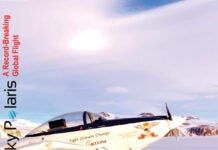When non-flying friends ask me what books I’ve read lately, I mention Pioneer Mechanics in Aviation. I always get a double take with that answer because most people expect Harry Potter, Twilight, or some other pop culture book du jour. But if you know me and my EAA mates at Chapter 494, Pioneer Mechanics in Aviation is our cup of tea any day.
I discovered this book by accident. A while back, I was looking up info on America’s original aviation sweetheart (before Amelia), Harriet Quimby. Harriet was the first American woman to earn a pilot’s license, a feat for which she was deservedly honored on a U.S. postage stamp in 1991. I was going through my wife’s stamp collection looking for aviation-themed stamps when I saw the Harriet Quimby stamp. “Hey! That’s the same last name as Roger (my neighbor).” I asked Roger if he’d ever heard of her and he said, “According to family lore, we might be related.” But, he conceded, no one knew for sure.
I had to find out! How exciting would that be? To live across the street from a direct descendant of a bona-fide aviation pioneer!
My research led me to a Harriet Quimby website and book by aviation writer and historian Giacinta Bradley Koontz. In addition to the Quimby book, she had just completed two other books: The Original Grand Canyon Airport and, the subject of my review, Pioneer Mechanics in Aviation. The topics looked interesting, so I bought all three. When they arrived I was pleasantly surprised to find them autographed and personalized!
Koontz’s bio is really interesting. She’s been an aviation writer a long time, but I had never heard of her because she has mostly written for trade journals such as Aircraft Maintenance Technician and Director of Maintenance. Her columns generally focused on notable, but largely unsung, heroes of early aviation including many pioneer-era mechanics, of which many eventually became important boom-era engineers and designers. Pioneer Mechanics in Aviation is a compilation of some of Giacinta’s previously published articles.
The book is organized with every profile as a chapter, so you don’t have to read it in any particular order. If your plane has a Sensenich propeller, for example, or a Pratt & Whitney engine, you’ll probably jump right to those chapters.
Each of the 20-some pioneer mechanics featured by Koontz has an amazing story, and she does justice to all. The reader will discover what these individuals did to attain their status and the enduring family connections that persist to this day. The book also talks about the Portal of the Folded Wings Shrine to Aviation in Burbank, California. More than a dozen historic figures of aviation are buried there, including Wright brothers’ mechanic Charles Taylor and Winfield Bertrum “Bert” Kinner, two of the featured inventor/mechanics profiled in the book.
Pioneer Mechanics in Aviation deserves to be in every collection of aviation books (as do the other Koontz books). As for the Quimby family history? Roger’s still not sure. Harriet Quimby died in 1912 at age 37 after falling out of her Bleriot monoplane. She was never married and had no children. So if he’s related, it’s by way of some other branch of the family.













